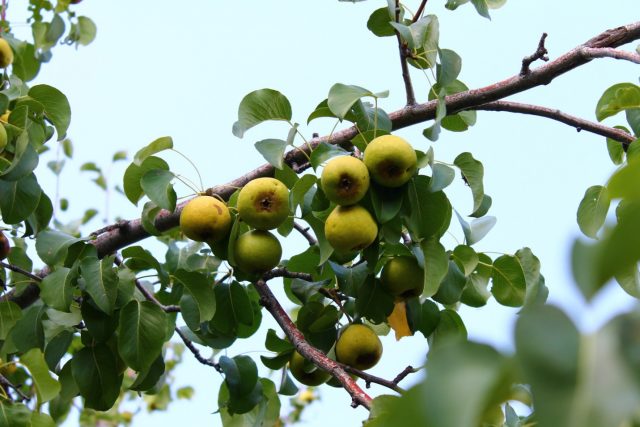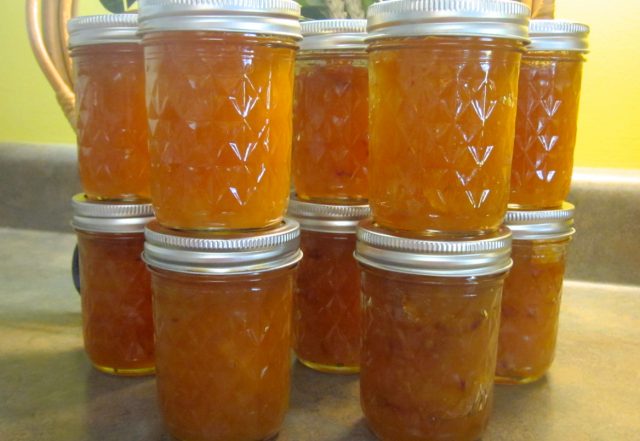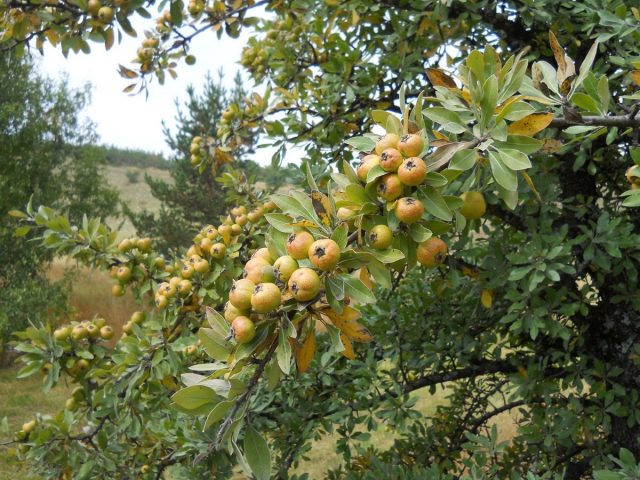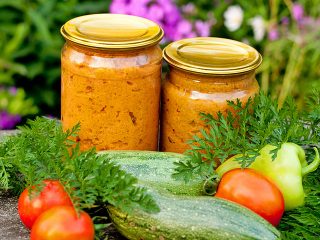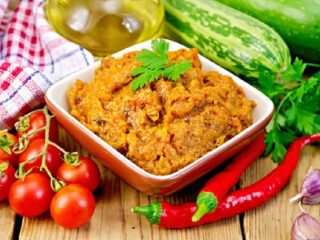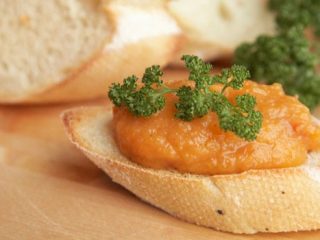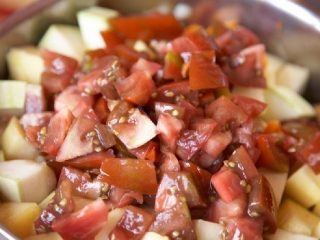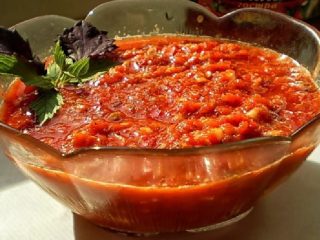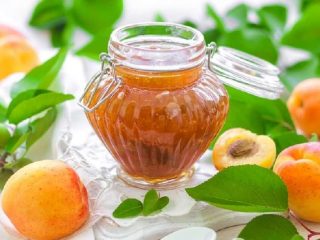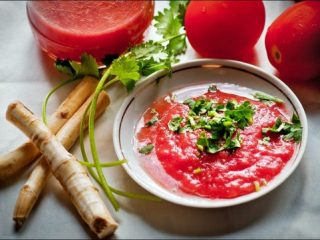Content
Wild pear (forest) is a variety of common pear. A tree up to 15 meters high with a dense crown, life cycle about 180 years. Fruits in the 8th year of growth. Not only the fruits, but also the bark and leaves have medicinal properties. In cooking they are used for cooking compote, jam, wine, fruit juice. Consumed fresh or dried. Used in alternative medicine to prepare tinctures and decoctions.
Medicinal properties of wild pear
The composition of the fruits, branches and leaves of the wild representative of the species includes a large number of active substances useful for the human body:
- dietary fiber (fiber);
- nitrogen compounds;
- starch;
- flavonoids;
- complex of vitamins C, B1, E, A;
- minerals: potassium, calcium, iron, zinc, magnesium;
- tannins;
- amino acids: malic, coffee, ascorbic, milk;
- proteins;
- sugar.
Wild pear is widely used in folk medicine.
Medicinal properties of wild pear branches
Due to its composition, wild pear branches have a healing effect for many diseases. Decoctions and tinctures are used for the following purposes:
- To improve blood formation.
- As a diuretic. Potassium contained in the branches removes excess fluid from the body, helps normalize blood pressure and improves the functioning of the cardiovascular system.
- To relieve diarrhea. The tannin contained in the shoots acts as an astringent.
- As an antibacterial agent for kidney and bladder pathologies.
- To normalize microflora in the intestines. Fiber stimulates the digestion process, and arbutin restores microflora.
Wild pear branches cleanse the body, remove waste and toxins. Used to eliminate radiation in bone tissue. Decoctions are indicated for diabetes mellitus.
Healing properties of leaves
Young wild pear leaves are used for medicinal purposes; they contain a high concentration of antifungal and antioxidant substances. An infusion or decoction is made from the leaves ground into powder. Used for treatment:
- fungus of the foot, nails;
- dermatitis of various locations;
- increased sweating (powder).
Antioxidants in the leaves normalize oxidative reactions, eliminate free radicals, promote cell restoration, and slow down the aging process of the body.
Taking decoctions orally helps relieve inflammatory processes in the joints and stomach, and improves the condition of irritable bowel syndrome.
Benefits of fruits
Wild pear fruits contain a high concentration of active substances. They have the following properties:
- antisclerotic;
- diuretics;
- antibacterial;
- astringents;
- cleansing;
- vascular strengthening.
The fruits are used to treat:
- cystitis;
- obesity;
- prostatitis;
- diarrhea;
- atherosclerosis;
- colds and coughs.
Decoctions of the fruit are taken to reduce fever in infectious diseases. Thanks to the diuretic property of the fruit, stones are removed from the kidneys and urinary system. Men over 45 years of age are recommended to drink a decoction of wild game for the prevention and treatment of prostatitis.
The fruits of wild trees are required in a salt-free diet for nephritis and cardiovascular pathologies. Recommended for intoxication; they remove toxins well in case of food and chemical poisoning. Widely used for anemia, the iron contained in the composition increases hemoglobin.
Collection and procurement of raw materials
Wild pear begins to bloom at the end of April, the fruits reach biological ripeness by mid-September. This is the time of preparation for medicinal and culinary purposes. There are several ways to collect wild pears: by hand, by knocking or shaking. It is recommended to first lay out the fabric under the crown.
The first method is the most acceptable; the fruits last longer. When shaken, the fruit hits the ground, so storage time is significantly reduced.
The next stage is fruit sorting. It is necessary to remove fragments of dry branches, leaves, damaged or rotten pears. The taste of ripe wild pear fruits is sour and bitter. They are left to sit. After a while, they acquire a light brown color, become juicy, and the bitterness disappears. Such wild fruits are used for preparing fruit drinks and eating fresh. The downside is the short shelf life.
The leaves are dried in a well-ventilated place, not in direct sunlight. The branches, on the contrary, are dried in the sun and pre-cut into pieces of approximately 10 cm.
What can you cook from wild pears?
The fruits are of universal use; they are consumed fresh, or infusions are prepared from dried fruits. Wild pears are used to make homemade preparations for the winter in the form of jam, jam, compote, and juice.
Fragrant jam
The recipe for wild pear jam is designed for a two-liter glass jar. You can increase or decrease the amount of ingredients, maintaining the given proportion. To make jam you will need:
- wild pear fruits – 2 kg;
- sugar – 2 kg;
- water – 0.5 l;
- medium-sized lemon – 2 pcs.
Before preparing the jam, the fruits are inspected, damaged ones are removed, the stalks are removed, washed well, and laid out on a napkin to dry.
Sequencing:
- Each wild pear is pierced in several places so that it is better saturated with syrup.
- Boil over low heat for 10 minutes. so that the peel becomes soft.
- Take it out and place it in a container with cold water.
- Prepare the syrup: bring sugar and water to a boil, boil, stirring constantly until the sugar is completely dissolved.
- Place wild pears in the syrup and leave for a day.
- Then put on fire, boil for 8 minutes, leave for 12 hours.
- The last procedure is repeated; before completing the heat treatment, juice squeezed from lemons is added.
During triple boiling, the peel becomes soft and the fruits acquire a golden hue. Pour the product into pre-sterilized jars, cover with lids, turn over, and wrap. After a day, the jam is ready, it is removed to a permanent storage place.
Jam
To prepare wild pear jam, you will need the following ingredients:
- sugar – 1.25 kg;
- water – 0.5 l;
- fruits – 1 kg.
Before cooking, wash the fruit, peel it, and remove the core and seeds. Cut the fruit into 4 parts. Jam preparation technology:
- The game slices are placed in a boiling container, filled with water, and boiled until the fruit becomes soft.
- Take it out and put it in a separate bowl.
- Measure the liquid in which the wild pear was cooked and add the missing amount (according to the recipe).
- Add sugar and keep it on low heat until the crystals are completely dissolved.
- Place pears into the prepared syrup and boil for 15 minutes.
- Remove from heat, leave for 4 hours, during which time the jars are sterilized.
- Then the jam is boiled for 10 minutes, packaged in pear jars, poured with syrup, and rolled up with lids.
Dried fruits
To prepare dried fruits, take ripened wild pear fruits; they must be free of mechanical damage and rotten fragments.
Sequencing:
- The fruits are washed.
- Cut into 6 parts, do not remove the core.
- Place the fruit in 1% citric acid for 1 hour.
- Place in boiling water for 2 minutes. (blanch), then cold.
- Dry in the oven or electric dryer.
You can dry the pears in the sun, spreading them out in one layer on a cloth. The finished product is stored for no more than 2 years.
Pear juice
Wild pear juice can be consumed freshly squeezed or prepared for the winter. Step-by-step instruction:
- The fruits are washed and dried.
- If a juicer is used, the peel is left; when using a meat grinder, the peel is cut off.
- The resulting raw material is squeezed out.
- Place on fire and bring to a boil.
- Taste and add sugar if desired.
- Boil the juice for 5 minutes.
- Pour boiling into sterilized jars.
Pears are prone to fermentation, so additional sterilization of the juice in jars is carried out:
- 3 l – 35 min;
- 1 l –15 min;
- 0.5 l –10 min.
Roll up the lids and wrap for a day.
Compote
Wild pear compote is prepared, as a rule, in three-liter jars. One container of compote will require 0.250 kg of sugar. Cooking sequence:
- The fruits are washed, the stem and top are cut off.
- Pour boiling water over the jar, add fruit (1/3 of the container).
- Pour boiling water over, cover with lids and leave for 30 minutes.
- The water is drained, boiled again, the cylinders are filled, and left for 20 minutes.
- Then the water is drained, sugar is added, and boiled until the syrup is ready.
- The syrup is poured over the fruits and the lids are rolled up.
Use in folk medicine
In alternative medicine, fruits, branches and leaves of the tree are used. For cold-related coughs, traditional medicine recommends drinking a decoction of dried wild pear fruits. Helps with swelling. A decoction of the branches relieves diarrhea. Traditional recipes:
- For osteochondrosis, prepare a decoction of 5 pear branches, 10 cm long. Pour the raw material into 1 liter of water and boil for 30 minutes over low heat. Remove from the stove, wrap, leave for 6 hours. This is the daily norm, it is divided into equal parts and drunk throughout the day. The course of treatment is 1 month.
- Treatment of prostatitis is carried out with dry dried leaves. A glass of leaves is poured with boiling water (0.5 l), left for 6 hours, filtered, and drunk 3 times a day after meals.
- To normalize the function of the gastrointestinal tract, prepare an infusion of 0.5 cups of leaves and the same amount of finely chopped branches. Pour the mixture into 0.5 liters of water and boil for 20 minutes. Wrap up, leave for 12 hours, filter. It is better to prepare the decoction in the evening; in the morning you will get the daily dose of the product. It is divided into three doses, drunk 30 minutes before meals. A decoction of dried fruits, which is taken in the morning on an empty stomach (200 g), is useful for the digestive system.
- For dry eczema, lotions made from dry wild pear leaves help relieve inflammation and speed up the regeneration of skin tissue. To prepare the product, take a glass of raw materials, place it in a thermos, pour in 1 liter of boiling water, and leave until it cools completely. Then the broth is filtered, moistened with a clean napkin, applied to the affected area, and fixed with a bandage or plaster. Remove the napkin after drying. The procedure is carried out at least 5 times a day.
- Lotions based on pear leaves are used for all kinds of dermatitis.
Contraindications for wild pear
Despite the fact that wild pear has medicinal properties, there are a number of contraindications to its use. Treatment is not recommended in the following cases:
- for chronic diseases of the digestive tract;
- acute form of gastritis;
- stomach ulcer.
It is not recommended to eat pears on an empty stomach, or drink water after meals, as the liquid provokes fermentation. Pear takes a long time and is difficult to digest, so meat dishes should not be consumed at the same time. You should not eat unripe fruits.
Conclusion
Wild pear contains a large amount of vitamins, trace elements and minerals. Used in alternative medicine as an anti-inflammatory, antifungal, antibacterial agent. The fruits are suitable for winter harvesting.
